Introduction
This article will take a closer look at examples of vast destruction wrought on Antecedent Egyptian (AnE) cultural monuments. J. L. Giddings found at Engineer Creek in Alaska, the Z-pinch Aurora (ZPA) passed over it three times in three hundred and seven years. Three layers of shredded forest, from thirty to ninety feet thick, were deposited on the hillsides and valley floor1. Remaining monumental buildings in Egypt represent a small fraction of the tens of millions of tons of quarried rock.2 ZPA dealt destruction on Egypt like was done to Giddings' conifers. Evidence indicates it did not succumb as a result of a single catastrophic event. The culture continued to function for a while. Furthermore, the ZPA's appearance sparked political turmoil in AnE society. This article will review signs of political upheaval and evidence of destruction.
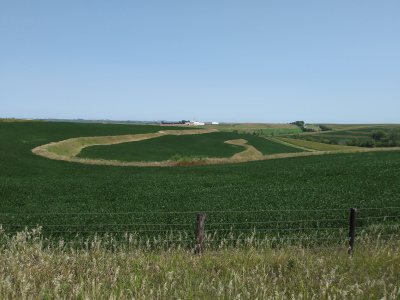
Figure 1
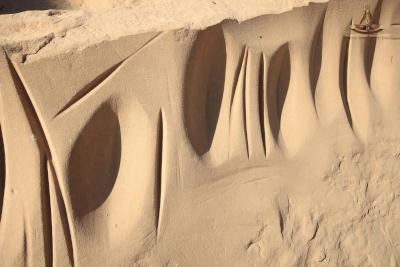
Figure 2
AEC like the ones above in Iowa are simply ignored by researchers or passed off with a literary contrivance explaining their origin. A huge amount of rock disappeared when ZPA plasma connected to Earth at this location in Iowa. Whether rock or Egyptian monument, all could be reduced to plasma. PP channels seen in fig.2 at Silsila Quarry are also ignored. Colossi of Memnon is the poster child of Egypt's research train wreck. Researchers assert numerous flood-idled Ancient Egyptian (AE) peasants swarmed over these massive blocks pounding away with diorite pounders until a master-piece emerged from the cloud of rock dust, a notion attributing the impossible to the incapable. These monuments were the creations of Antecedent Egyptians (AnE) using the precision of plasma technology. PP channels provide insight into what happened towards the end of AnE culture.
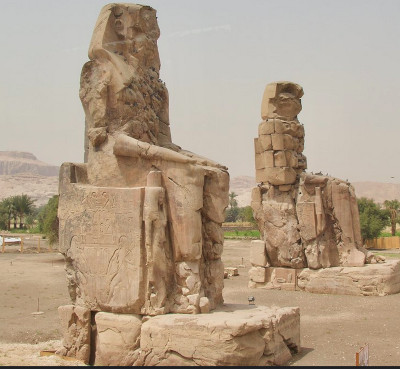
Figure 3
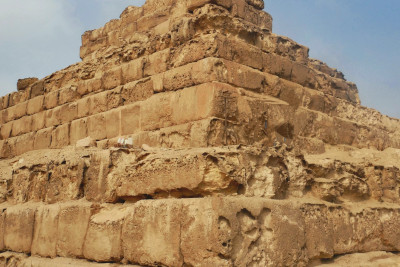
Figure 4

Figure 5
The building above was abandoned either before or after the appearance of the ZPA. Blocks intended for it would have never been delivered in the matter seen above scattered across the landscape. AnE were not sloppy builders. Levitating effects of plasma scattered and severely eroded them. Irregularly shaped blocks in the image strongly indicates the structure was prefabbed at the quarry. If not, the architect faced a nightmare trying to bring the building to its designed height using a random assortment of blocks. The extra shaping would have increased the job's difficulty that standard block size would have eliminated. The AnE technology did not stop with the production of precision sculptures, that was probably the tip of the iceberg.
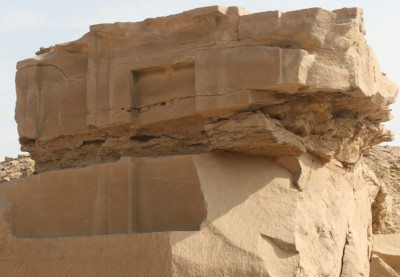
Figure 6
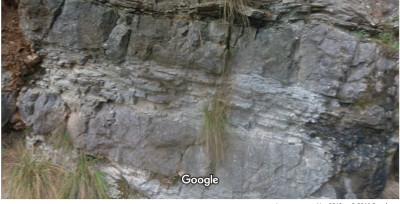
Figure 7
The forces creating above two images, fig.6-7, are a mystery. The pattern looks somewhat like parallel fracturing of electricity with the narrowly defined precision of plasma. An event like this could easily wreck a temple, while the levitating effect of plasma could scatter the pieces. Images give the impression paths were lateral rather than descending from above like Sipsey Events (SE) which puts the attribution solely to electricity in question. Plus, SE distort surrounding rock which is not seen here. Raising the possibility a combination of electricity and plasma was involved. The Majorca image, fig.7, has tracks, not clearly discernible, above and below the center one. It is the same natural phenomenon. Another possibility is that the images are fragments of very large electrical events. The images reflect the intensity of a Peratt environment that rolled across on Egypt.
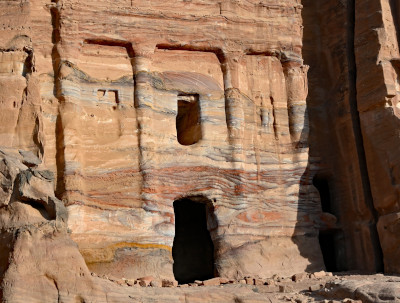
Figure 8
An electrical strike on a building in Petra is seen in fig.8. The city gives a good indication of what occurred in AnE. Images like this could not be found in Egypt. It demonstrated what electricity alone can do to rock. The red arrow in fig.11 points to a small electrical strike at Luxor. It seems electricity performs differently when in the presence of plasma, but what occurs is unknown.
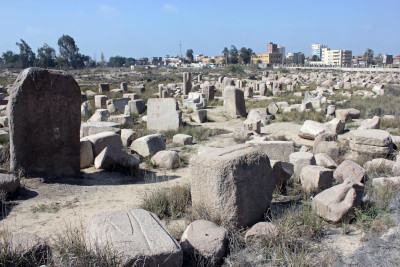
Figure 9
When looking at places like Bubastis above, almost nothing remains of any buildings. The way blocks are scattered indicates structures were smashed up and pulled apart. It is understandable why AnE used blocks ranging from several to four hundred tons. Their building could be pulled apart by the levitating property of plasma. As a precaution dovetails were used to tie blocks together,fig.10. They were found at the Osireion3. Dovetails and use of multi-ton blocks were counter measures against the levitating effects of ZPA.
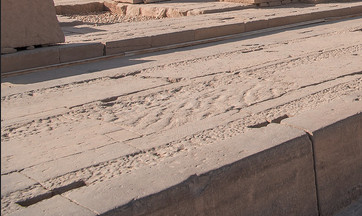
Figure 10
Antecedent civilizations had tens of thousands of years experience confronting ZPA. Dovetails were one adaptation. They united blocks into a single unit. They indicate previous experience with z-pinches were on the minor side. This may have led them to believe these precautions were sufficient to ameliorate any situation with the ZPA.

Figure 11
The white arrow points to PP channels. Notice how they follow the block's outline. In fig.12A below are capital's with repaired plasma damage and a lot of PP channels. They follow the edge of the repairs, but no channels are found cut in half. This is a consistent pattern with PP channels. The conclusion is they were applied after the damage to the temple. Plasma never returned to this particular location again. It may have wrecked other parts of the temple later but not here. This means the AnE survived their early confrontation(s) with the ZPA.
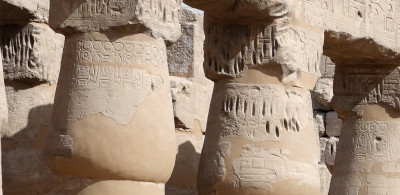
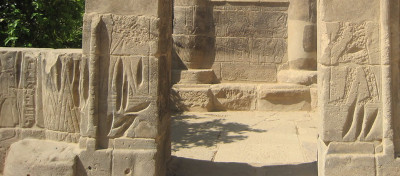
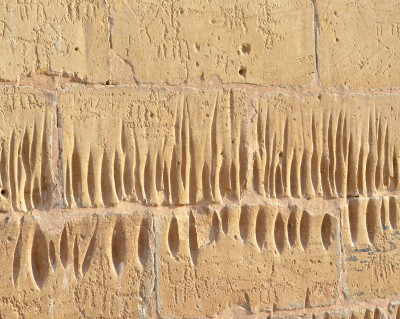
Figure 12
The people who used the PP in the images above had ever handled them before. They were amateurs. The channels look nothing like what is seen in the Silsila image above, fig.2. Some are much wider than others especially those below the block joints, fig.12C. Channels give the appearance of users starting from below and raised the machine unsteadily. Some are so small and thin, giving the impression power was running low. Once the capacity to generate power was lost, the technology cease to have value. Apparently whoever owned these machines lost control of them, and they fell into the hands of the general population.
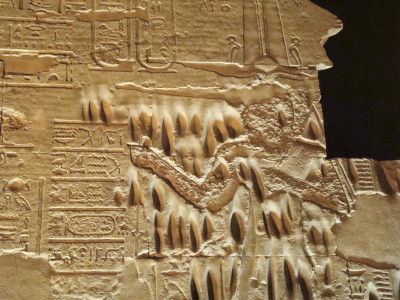
Figure 13
Plasma has detrimental effects. People using these machines were told that. Plasma could pass between blocks and out the other side. They were very careful not to cross joints between blocks with PP channels. Vast majority of channels start or end close to block joints. In fig.12C users took too long to cut a channel so widths expanded from prolonged exposure to plasma. Channels show users were also ignorant of stone masonry in general.
The relief in fig.13 was carefully vandalized with a pick like device. Someone later took a PP to the scene. Note how the channels approach the relief's edge but do not cross it. User thought the relief edge was a block joint, so it was not crossed. The person knew nothing about masonry. The same vandalism of statues using PP is seen at Silsila. The political structure was overturned.
Vandalism of monuments was so pervasive it could only mean Egypt sank into political chaos. The group in power were thrown out along with certain religious symbols. Hathor must have been one deity who got the ax. Her images were defaced at the Dendera temple. The appearance of the ZPA would be traumatic for any society. This probably brought work at quarries like Silsila to a stop. With nothing to do workers started carving channels and depressions on quarry walls. The technology and energy production still functioned, but the demand for rock must have ceased.
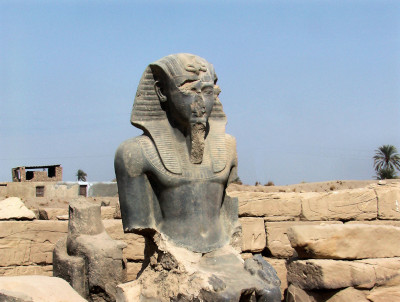
Figure 14

Figure 15
The block above made it through the first appearance of ZPA. The building from which this block came was vandalized after an earlier event. Later the same build was destroyed during a reappearance. The findings of J. L. Giddings help fix periods of high ZPA occurrence. Any predictions regarding these events is problematic. The science does even exist for studying plasma-earth interaction.

Figure 16
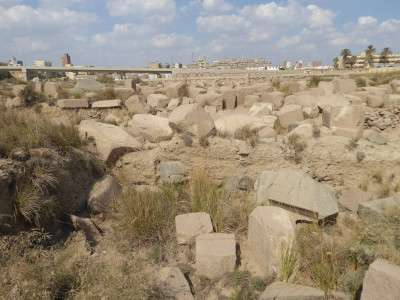
Figure 17
The debris field above is what remains of Bubastis after the destruction by ZPA. Severe plasma erosion is found on many blocks. The most significant point about this location is its proximity to the Mediterranean Sea. If the sea level was 400 feet lower 10k+ years ago, as stated by researchers, Bubastis would not be here because the delta would not exist. Particular coastal locations may have risen or fallen in the past, but a general change in the sea level did not happen. This site will back-out previous comments made in earlier articles related to changes in sea level.
Egypt is a research masquerade where costumes are narratives that do not fit, but everyone pretends they do. Props are temples, tombs, and pounders. Political order broke down in Antecedent Egypt, and the Ancien Régime was thrown out. People who had ever used PP got hold of them, and used them to deface the temples and images associated with the old regime. Demand ended for blocks from quarries like Silsila. Workers hung around for a while waiting for work that never came. They occupied themselves making channels and depressions on quarry face. Eventually Silsila was abandoned. Later appearance(s) of ZPA delivered the final death blow to AnE culture. With humans gone wildlife like ostriches used Silsila as a path to water. Descendants of quarry workers turned it into a hunting ground. It was back to the Stone-Age.
-
Giddings, J. L., Jr., 1938. "Buried Wood from Fairbanks, Alaska." Tree Ring Bulletin, Vol. 4, No. 4, pp. 3-5↩︎
-
The building stones of ancient Egypt – a gift of its geology, Dietrich D. Klemm, Rosemarie Klemm, Journal of African Earth Sciences 33 (2001)↩︎
-
The Osireion: A Layman's Guide, Keith Hamilton, 11 October 2018, pp 47. Researchers say the Osireion's builder was Seti, but it was not a historical Seti.↩︎

